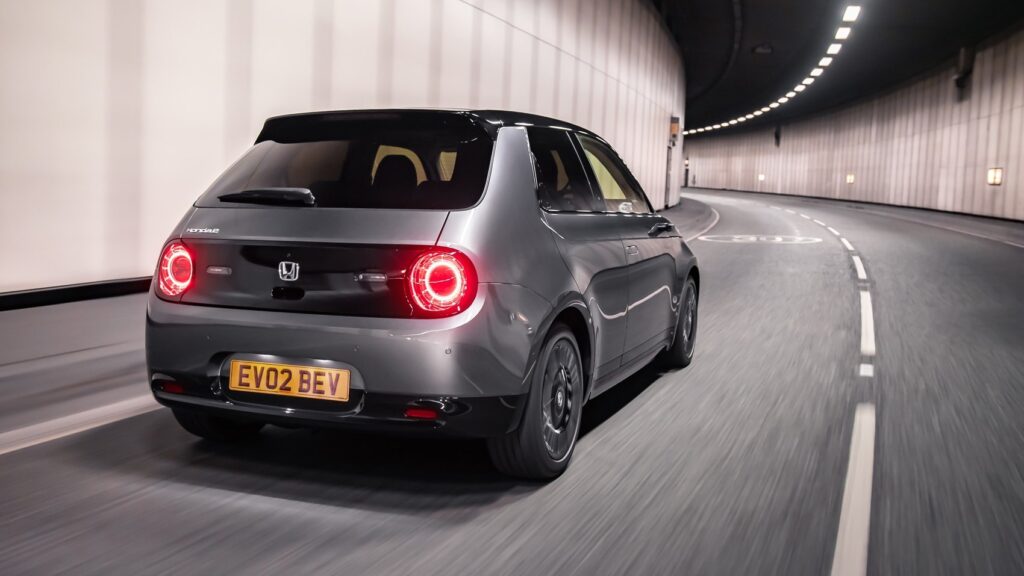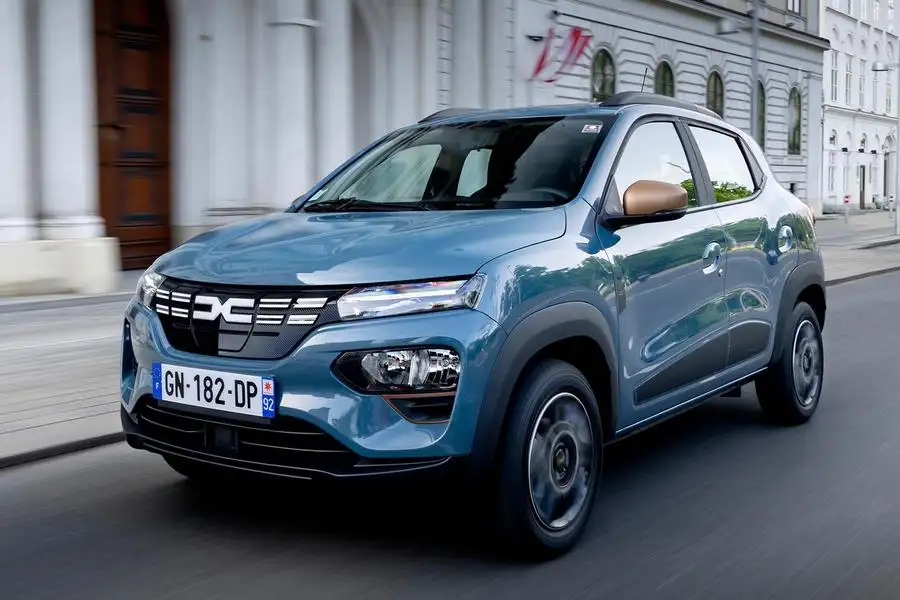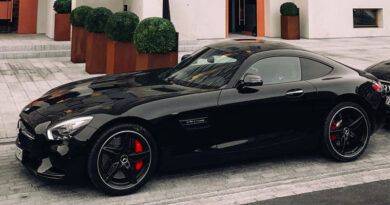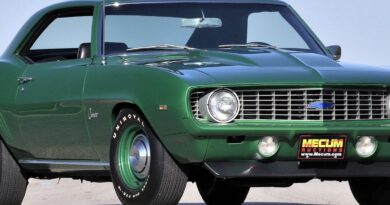
Top 10 best small electric cars 2023
The next three years are set to bring a new level of accessibility to electric car ownership. If the last decade has been about demonstrating that EVs can work for families and businesses, typically as part of two-car households and fleets, the coming years look set to show that they can be affordable — and viable — as superminis and city cars with genuinely tempting showroom prices and real-world figures for electric range.
Small hatchbacks have long been among the most popular cars in the UK; so why should that change with electric cars? Up until now, high prices have been in the way; as, to a certain extent, have packaging and weight. After all, the compact size, practical interiors and light, nimble handling of small cars couldn’t be more suited to our back roads and suburbs. It’s simply that electric technology perhaps hasn’t, thus far, delivered small cars quite to that recipe.
Batteries are expensive and more easily hidden in something SUV-shaped, which means that we’ve seen most of the innovation in the bigger segments, with the classes of larger EVs filling up quickly with very competitive models. It’s also much easier to convince someone who’s got two or three other cars to call upon that something on his or her driveway should be electric than someone with only one car, who depends upon it for everything — as supermini owners sometimes do.
Best small electric cars 2023
1. Peugeot e-208

Pros: Good battery range for the price, comfortable ride, decent performance
Cons: Soft suspension impacts body control at speed, some low-rent materials, slightly cramped rear seats
As a traditional combustion-engined supermini, the Peugeot 208 doesn’t do an awful lot to stand out from the crowd. However, in all-electric guise, our road testers reckon it’s one of the most appealing small cars there is. That’s thanks to its mix of genuinely usable range, strong performance, value, practicality, style, perceived quality and, last but not least, driver appeal. Essentially, it deserves to figure highly if you’re shopping for your first electric car.
This Peugeot’s materially rich and distinctive interior distinguishes it just as clearly as the stylish bodywork. Its practicality is on a par with the Renault Zoe’s and better than a Mini Electric’s. Both of those aspects are key considerations for cars like this.
During our testing, we found that the e-208’s refinement beats both of those arch rivals, too, while performance is still fairly strong. Certainly, you get an adequate dose of that electric-motor-enabled zip.
The car also rides with a suppleness missing from some smaller EVs, which often struggle to contain their body mass on the road; while in its higher-speed body movements, it doesn’t feel as heavy as its main rivals. The steering is striking for its directness, although body control deteriorates a little if you drive more enthusiastically.
Even so, it’s the roundedness of the e-208’s driving experience that really impresses. Its claimed range of 225 miles isn’t to be sniffed at, either; and with a longer-range version (248 miles) imminent, with a little more motor power to sweeten the deal, it sits pretty at the top of this chart of obvious reasons.
2. Fiat 500

Pros: Handsome styling, decent tech, drives well at speed
Cons: Overly high driving position, so-so real-world range, poor pedal placement
Fiat’s model range is now slightly confusing, because the old car lives on as the Fiat 500 Hybrid (despite being only a mild hybrid). The one you want, however, is the new electric 500. It might look familiar, but it’s only when you see them side by side that you realise the new electric 500 is completely new.
Fiat has done a marvellous job at retaining the modern-day 500’s cute retro looks, while making it into a car for the modern age. Because it was developed as a purely electric car from the outset, it has a fairly sizeable (for a small car) 42kWh battery and a theoretical WLTP lab test range of 199 miles, although we discovered that translates to more like 140 miles in real-world use. There is a cheaper Fiat 500 Action model with a 24kWh pack, but we don’t think the financial savings are great enough to offset the much shorter range.
The electric Fiat drives substantially better than any other 500 as well, with its 117bhp motor making it surprisingly zippy and fun for a city car. Yes, we found the steering to be quite light, but there’s plenty of grip and an absence of body roll — and while it’s not exactly at home on the motorway, it copes remarkably well.
The interior is also a massive improvement over previous 500s too. It’s still quite plasticky, but it looks great, the seats are comfortable and the infotainment is logical and responsive. There’s even a convertible model with a roll-back canvas roof. It’s still not great for tall drivers, though, and it goes without saying that you shouldn’t plan on carrying adults in the rear very often.
Inflation and the death of the Plug-in Car Grant have not been kind to the electric 500’s list price, though. At launch, you could buy one for under £20,000, but now the range starts at £28,195. If you want the longer-range version, you’ll need to fork out at least £31,195. That’s a fair chunk of change for such a tiny tot, but we’re still quite fond of this tiny, fashionable EV that’s surprisingly good to drive when you escape the city.
3. Vauxhall Corsa Electric

Pros: Decent real-world range, refined
Cons: Not much fun to drive, cramped rear seats, imperfect driving position
Vauxhall’s sibling to the Peugeot e-208 doesn’t quite have the same style or imaginatively configured interior of its sibling, but because it’s largely the same underneath, it’s still one of the best small electric cars.
Early versions were a little behind the Peugeot on range, but an update in 2022 that added a taller final drive ratio and a standard heat pump lifted the range from 209 to 222 miles; and now, a battery capacity hike and new electric motor has lifted it again, this time to 246 miles.
The Corsa Electric’s facelift also brought with it a thoroughly revised front end, and a new multimedia system. Unfortunately, it also comes with a chunky price increase, up to at least £35,125.
The Corsa might be a little plainer than the Peugeot, but to our eyes, it still looks handsome enough; especially in its latest form. The driving experience combines genuine 220-mile everyday battery range with keen and competent handling and a comfortable ride, while 100kW DC rapid charging compatibility as standard should be a selling point too. Vauxhall also has purchase incentives for a free home charger installation and access to a special home energy tariff.
4. Mini Electric

Pros: Good fun to drive, handsome styling, punchy performance
Cons: Poor real-world range, small battery, not particularly practical
The Mini Electric brought all of the fun factor you expect of the brand to the compact EV segment when it arrived in 2020 – albeit packaged with a few equally typical usability restrictions. Based exclusively on the three-door Mini bodyshell, the Mini Electric adopted the powertrain from the now defunct BMW i3 S, giving it a very healthy 181bhp and 199lb ft of torque.
We found performance to be notably stronger than many of the cars you might compare it with in this list, while we enjoyed the grippy, darty and agile handling: all the enduring dynamic traditions of the Mini brand. We like it a lot.
Range is the catch. Mini claims 143 miles, but in reality, depending on how and where you drive it, you’re more likely to get between 100 and 120 miles. And that’s in a car with a pretty small boot and whose back seats are tricky to access and of little use for anyone but younger kids anyway. Then there’s the fact that, with prices starting at a little under £30,000, this clearly is the most cost-effective compact EV.
Yes, the Mini is still one of the more enjoyable small EVs, but the short range means it’s no longer good enough to be at the top of this list. The good news is that an all-new version should land early next year with bigger-battery options. We’ve had a brief go in a prototype and it’s even better to drive than the current one, too.
5. Mazda MX-30

Pros: Upmarket interior, smart styling, sharp steering
Cons: Range is too short, impractical rear doors, not as light as it should be
Mazda has never been afraid to do things its own way, and the approach it has taken with its first all-electric car is no different. The MX-30 is therefore not quite what you might expect, but it’s an appealing proposition all the same.
Toy-car looks are wrapped around an unusually small battery pack – just 35.5kWh, giving an official range of 124 miles – because Mazda believes owners simply won’t need more (and increasing the size of the battery would mean unnecessary cost and weight).
The car is reasonably spacious within, has an SUV-lite body that is very much on trend, and is trimmed in interesting materials that give the cabin a singularly cosy and likeable atmosphere. It also includes distinctive ‘suicide’ rear doors — a nod to the brand’s old rotary-powered RX-8 coupé — but we found them slightly impractical in day-to-day use.
Dynamically, the MX-30 also stands out — although only when you’re travelling with a bit of pace on an interesting road. With 143bhp and 199lb ft, the electric motor didn’t blow our socks off in a straight line, but the weighting of the MX-30’s steering and the supple manner in which the suspension transfers weight while cornering are genuinely reminiscent of the MX-5 sports car. Around town, however, we found it a little plain.
Rapid charging at up to 50kW is possible so, if the limited range works for you, there is plenty to like about the unusual Mazda MX-30. And if it doesn’t, there’s always the rotary-engined, range-extended REV version. See? Mazda likes different — so do we.
6. BYD Dolphin

Pros: Long range, good value, very well equipped
Cons: Woolly handling, frustrating control interfaces
If you are after value for money, particularly for an EV, the incoming Chinese manufacturers are a good place to start. The latest company with big plans for Europe is BYD, which is rapidly building a full range of electric cars. Its smallest model, for now, is the Dolphin.
It is by no means the best car on this list, but given the entry-level model costs £25,490, rising to £30,990 for the fully loaded long-range version, some of its flaws can be excused.
The handling is quite woolly and the leatherette is a bit naff, but the main problem of all BYDs is that the infotainment system is infuriating. Even though the screen is huge, it hides important settings in deep submenus and doesn’t integrate with phone mirroring very well.
However, you get all the equipment you could possibly wish for, the ride is fairly plush and real-world range that’s comfortably over 200 miles is not to be sniffed at. The Dolphin is also a tad larger than the other cars on this list, so it offers more interior space as well.
7. Honda E

Pros: Eye-catching styling, zippy performance, sophisticated ride and handling
Cons: Short battery range, expensive, small boot
Honda has taken a left-field approach with its first all-electric car, the Honda E — which is unusually compact for an electric car, and innovative in several ways.
A rear-mounted motor promises packaging efficiency (although the car itself fails to follow through with it), while all-independent suspension heralds the ride and handling sophistication of a bigger car.
The E is available in 134bhp and 152bhp forms, but neither has quite the battery capacity of rivals: 35.5kWh gross is all you get here, which makes for a claimed WLTP range of 136 miles maximum (with the car rolling on 16in wheels). In testing, we struggled to get much more than 100 from our test car, which had 17in rims.
To drive, the E feels plush, composed and easy to operate, with medium-paced steering but a tight turning circle, and moderate but responsive performance. It didn’t excite us, and it doesn’t offer the last word in background body control, but it’s a relaxing zero-emissions city car and its alternative styling is exceptionally endearing. It’s helped here by genuine one-pedal driving, which, once mastered, delivers greater driver engagement and enhanced efficiency.
8. GWM Ora Funky Cat

Pros: cutesy looks, plush and spacious interior, decently mature ride and handling
Cons: lacks some features, buggy infotainment software, light steering, limited range
The Ora Funky Cat, from Chinese car manufacturing group Great Wall Motors, might grab your attention or any number of reasons. It’s a fairly large and practical car amongst its peers, after all, with a fairly eye-catching price. It’s called… what it’s called, which may also raise a smile. It’s even based on a model platform that GWM has christened ‘LEMON’ — although quite what that acronym stands for, or why you’d want to use it, is unclear. And, for an extra laugh, its brand model badge even looks a little bit like a cat’s behind.
The car underneath all of that is a mixed bag. It’s certainly spacious by class standards, and moderately attractive — although, while rear legroom is generous, rear headroom is hamstrung by the car’s under-seat battery location.
There are plenty of notes of material richness about the cabin, but as many cheap touches also. The infotainment system has plenty of functionality but a fiddly and infuriating layout of very small controls.
On the road, the car rides and handles well enough, but it steers discouragingly lightly, and has quite roughly tuned electronic stability control. Performance is quite strong when the battery is fully charged, but it deteriorates notably as it nears depletion. Cabin noise isolation is also a clear weak point for the car.
Overall, its consistency of finish, and depth of apparent engineered-in integrity, that the Funky Cat lacks. It’s not a terrible car — but it shows that plenty of Chinese brands still have a lot to learn.
Dacia Spring

If you’re looking for a small electric car, chances are you’re also looking for an affordable electric car; and if there’s one thing electric cars have tended not to be very good at thus far, it’s being affordable.
But you can trust Dacia to be big on value. It’s finally bringing the Dacia Spring Electric to the UK in 2024; and while you can’t buy one quite yet, we’ve already driven one — and know that, despite being based on the Indian-market Renault Kwid and its price likely starting below £20,000, it’s a very decent and genial little car.
Of course, you don’t get something for nothing, so the range is fairly short: the claimed 140-ish miles should translate to something between 110 and 120 miles in mixed real-world driving. Its 50kW DC charging speed isn’t much; but then the battery is only 26.8kWh so it’ll still fill up quickly.
On the road, the Spring has a breezy, agile and energetic way about it that speaks of its lightness and compactness, and while you won’t confuse its refinement and performance for that of a Mercedes S-Class, or even a Peugeot e-208, it’s all much better than you might expect for the money.
Where the Spring betrays its value positioning the most is in the interior, with a lack of adjustability in its driving position and fairly rudimentary materials. Then again, the 2024 facelifted version that the UK will get ought to improve those things.
With the Sandero, Jogger and Duster, Dacia has proved it’s an expert at injecting a bit of flair into a cabin without breaking the bank, so that bodes well.
Citroen e-C3

The Stellantis Group will open up its assault on the bottom end of EV ownership with the Citroen e-C3. While the group’s other superminis come with steeper price tags, this one is set to level with the BYD Dolphin, at about £25,000.
With styling inspired by the Citroen Oli concept, and a battery range of almost 200 miles according to WLTP lab testing, the e-C3 will be built in Europe, in Slovakia.
Stay tuned for a first drive verdict soon.
Renault 5

The Renault Zoe, which dominated the emerging market for small electric cars for so many years, is now out of production — and when it’s successor comes, it could be a game-changer for Renault.
The Renault 5 is due to appear in 2025, with a retro design that references the famous Renault hatchback of the 1980s. It’s expected to bring particular handling and ride sophistication to the electric supermini class, with all-independent suspension and a platform related to that of the larger Megane E-Tech.
Renault is already on record that it’s aiming to beat the price of the outgoing Zoe with the car — so we can expect sub-£30,000 affordability to go with those retro looks.
Mini Cooper E & SE

The BMW Group is moving the electric Mini upmarket in its second-generation form. Rebranded as the Mini Cooper E and Cooper SE, the new car — which is due on sale in the UK in late 2023 — opens up with 181bhp of power, 40.7kWh of battery capacity and a claimed 190 miles of electric range.
But opt for the pricier Cooper SE instead and you’ll get 215bhp, and up to 250 miles from the battery.
The car has been developed in a joint venture between BMW and China’s Great Wall Motor, but will continue to be build at BMW Plant Oxford, Cowley.
Volkswagen ID 2

Volkswagen’s new, front-drive ‘MEB Entry’ model platform will bring us the all-electric successor to the long-serving VW Polo in 2026, when the Volkswagen ID 2 goes on sale.
Wolfsburg is aiming for a starting price of around £22,000 for the car, and will offer it in 38- and 56kWh versions, with the latter targeting a 280-mile range.
The car will mark a key shift in Volkswagen design philosophy, seeking to reference iconic VWs of the past like the Beetle, Golf and Polo, rather than being quite as progressive and forward-looking at the larger ID 3.
It will also have a racey Spanish sister car — the production version of the Cupra Urban Rebel, the Ravel — although don’t expect this version to come quite as cheap.
BYD Seagull

This is the car that could really put the ‘budget’ in budget EV motoring. The Seagull is an A-segment-sized supermini smaller than most in this list. It made its debut at the Shanghai motor show early in 2023; and with battery of capacity of up to 38kWh, it touts range of up to 252 miles in its domestic market.


